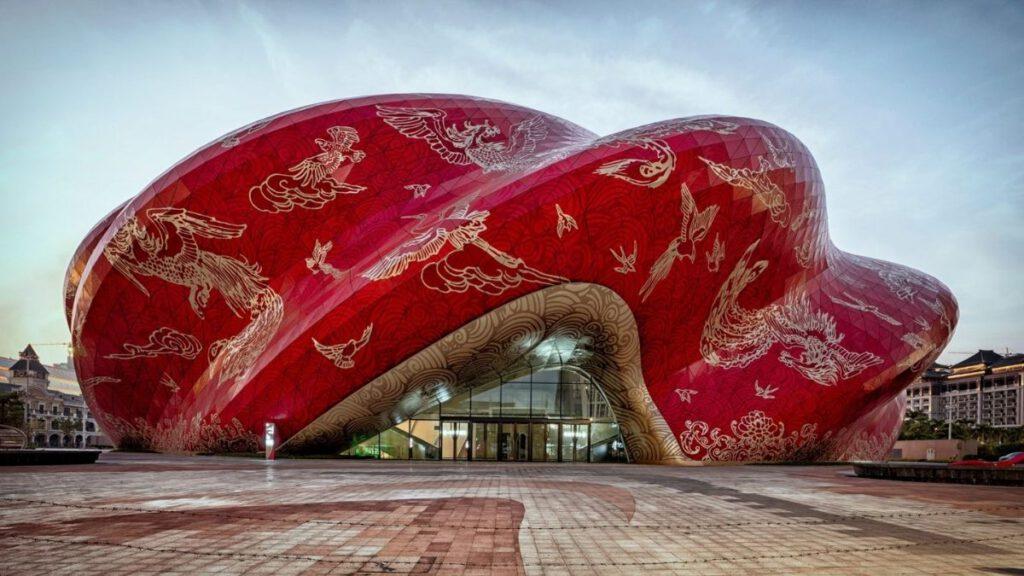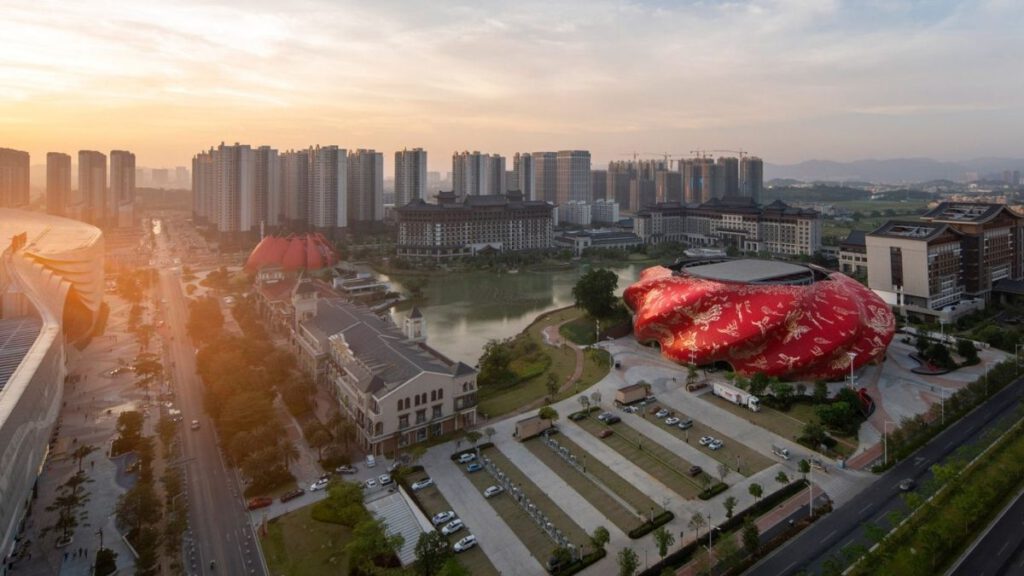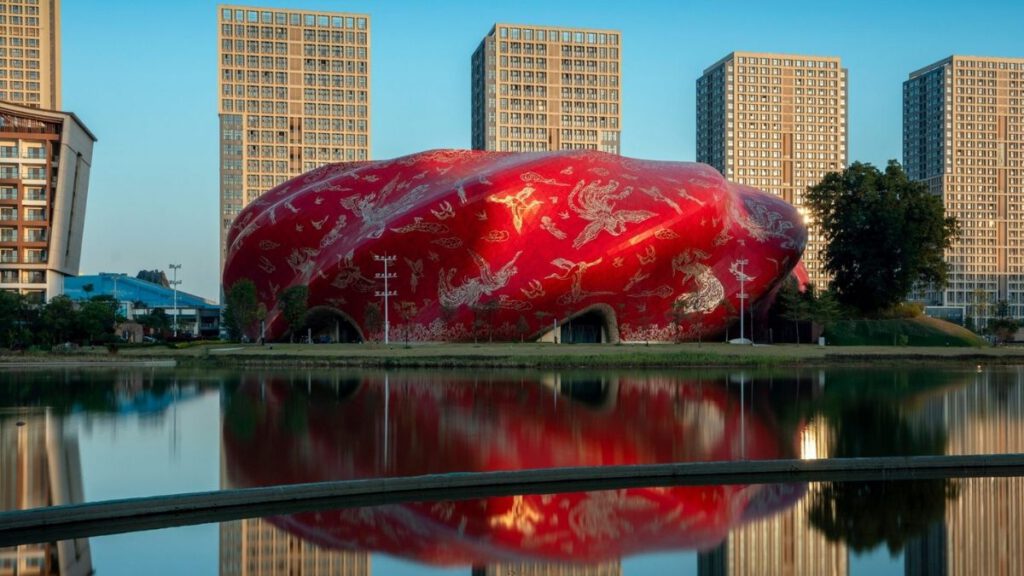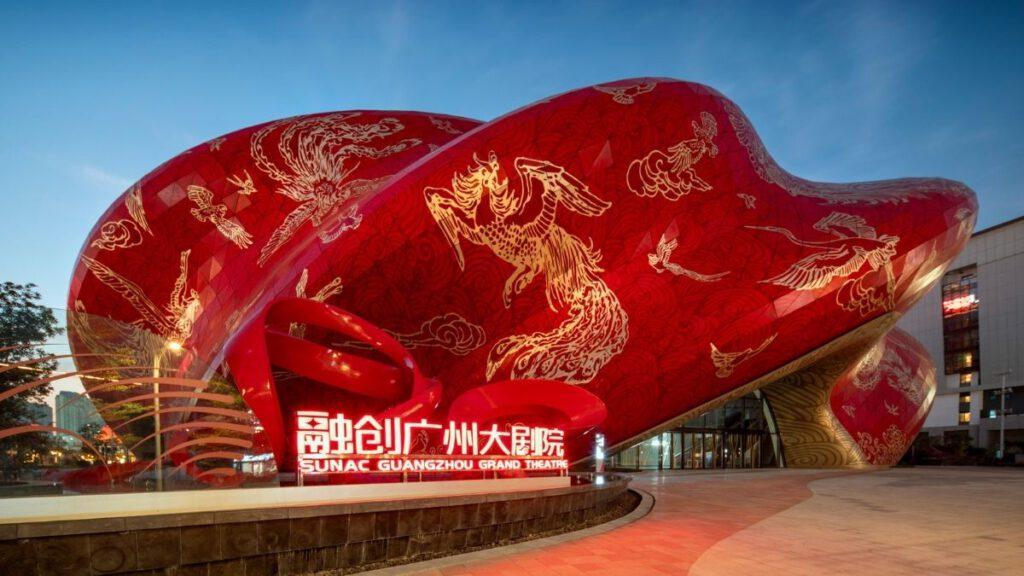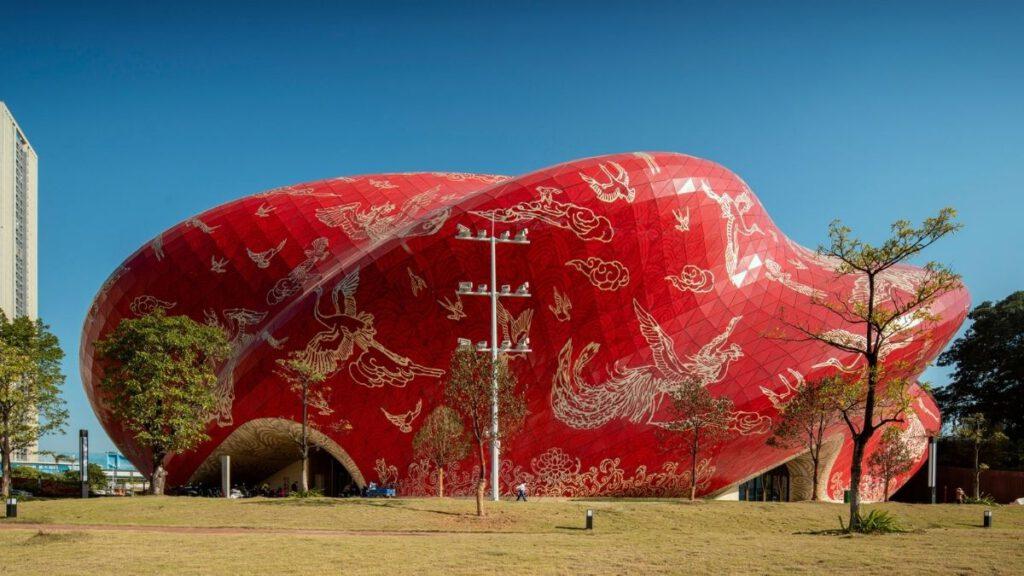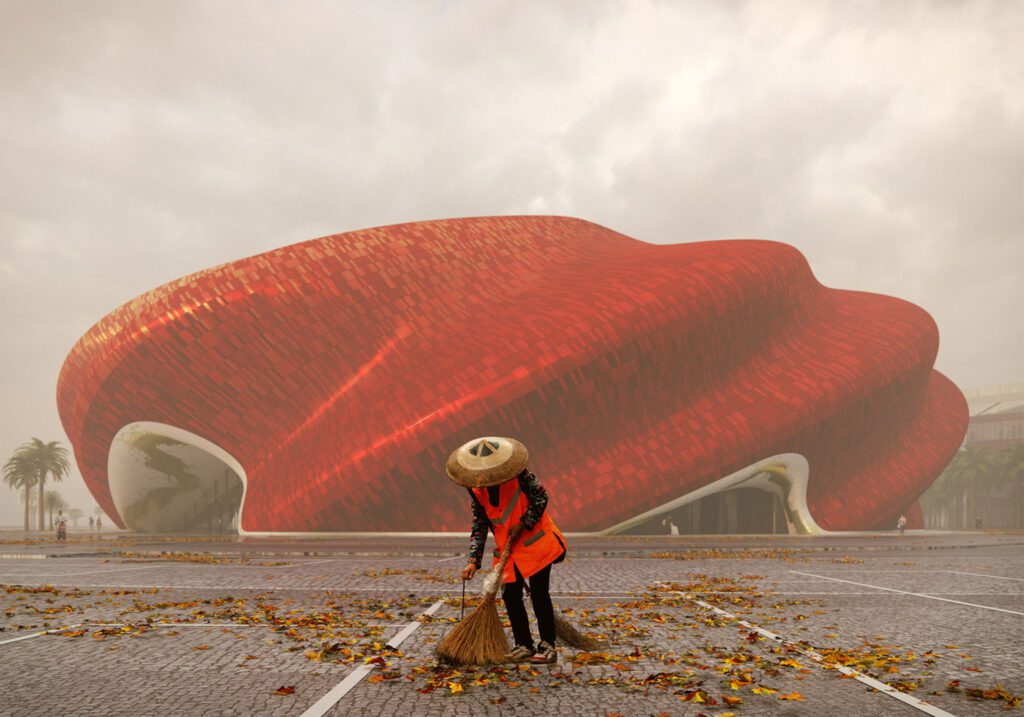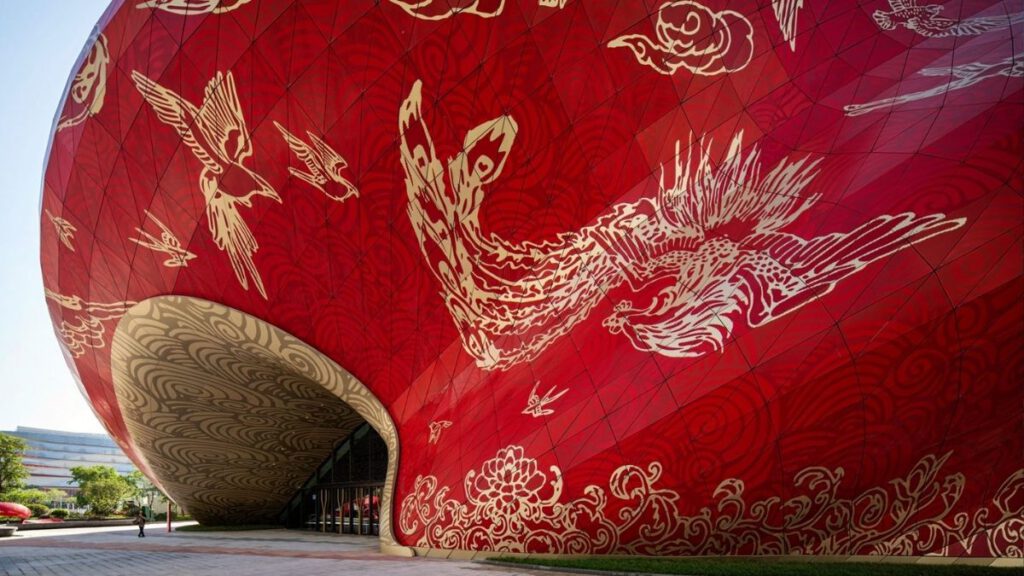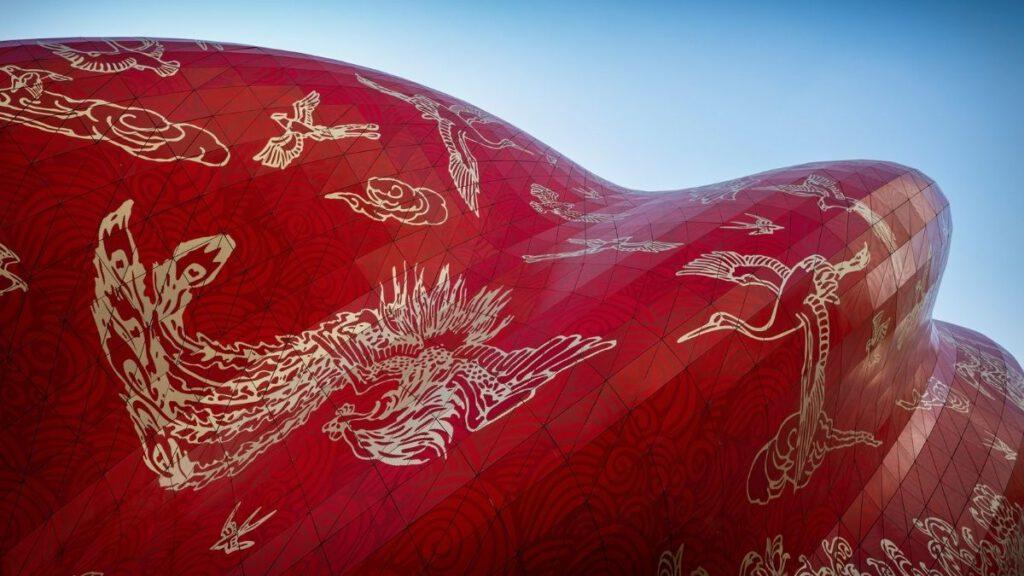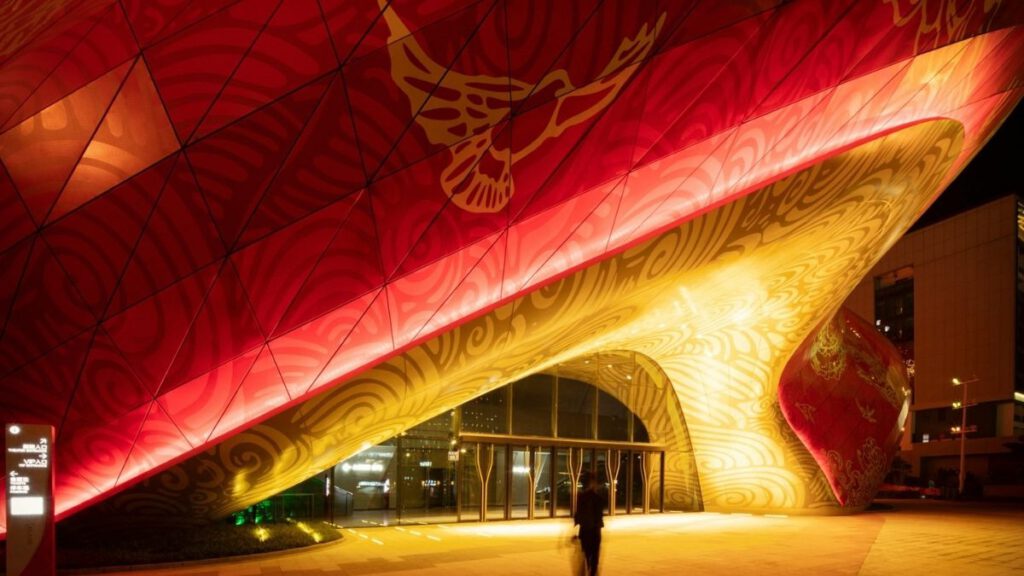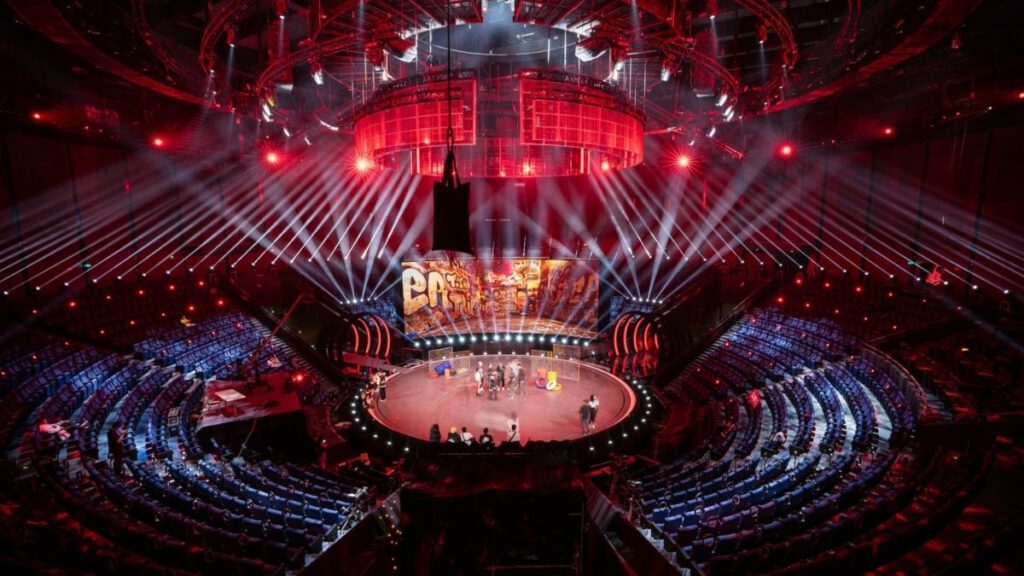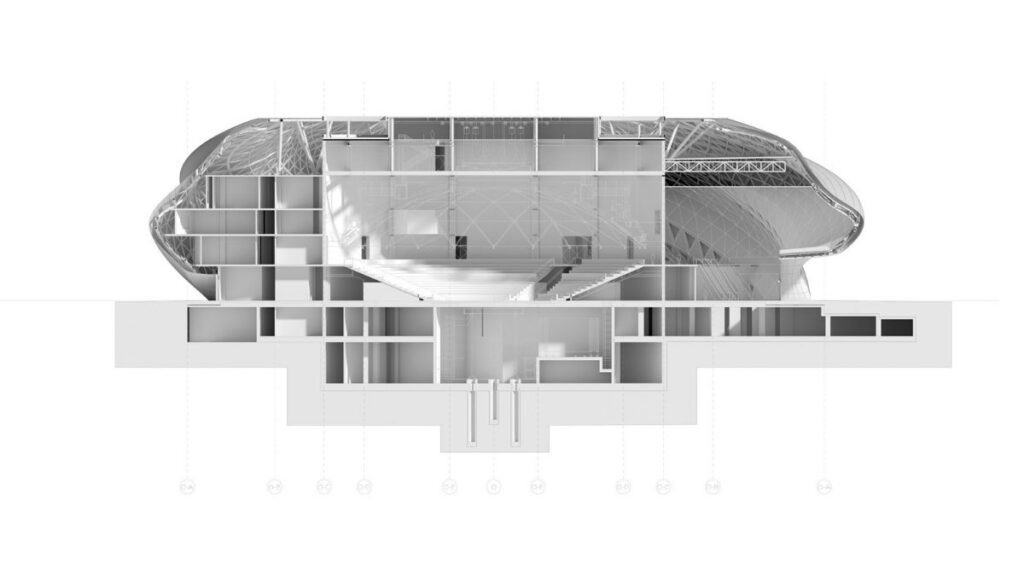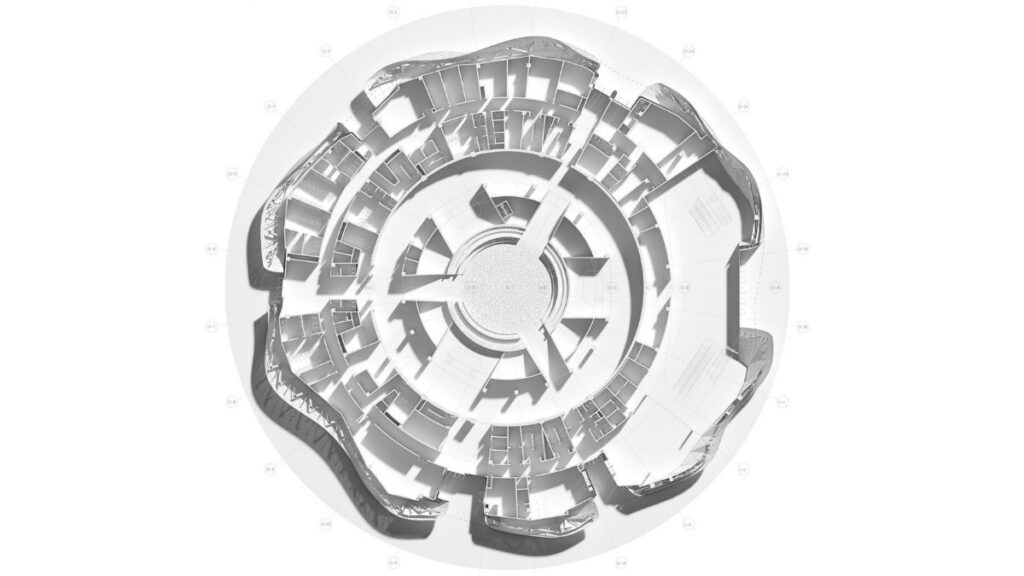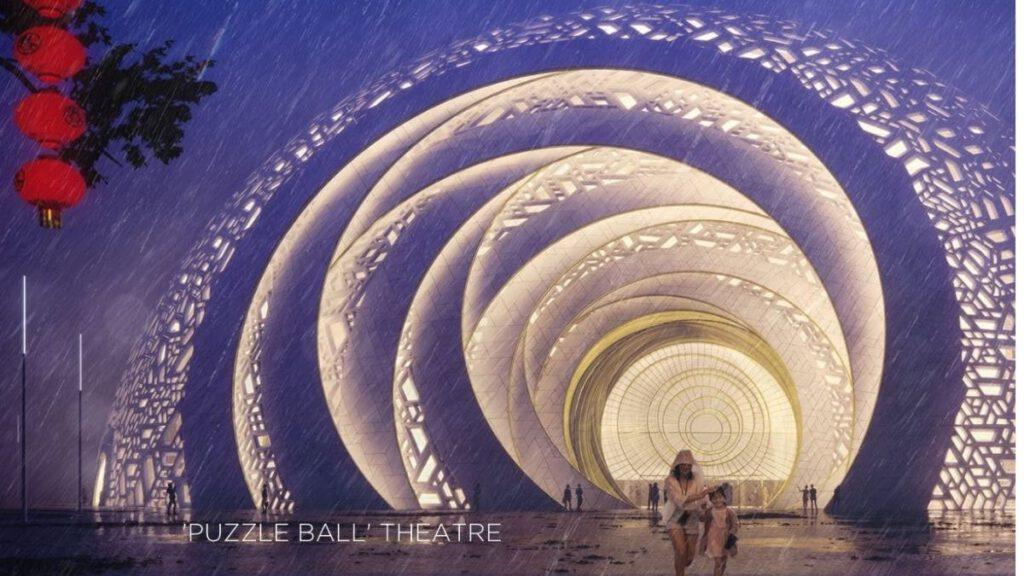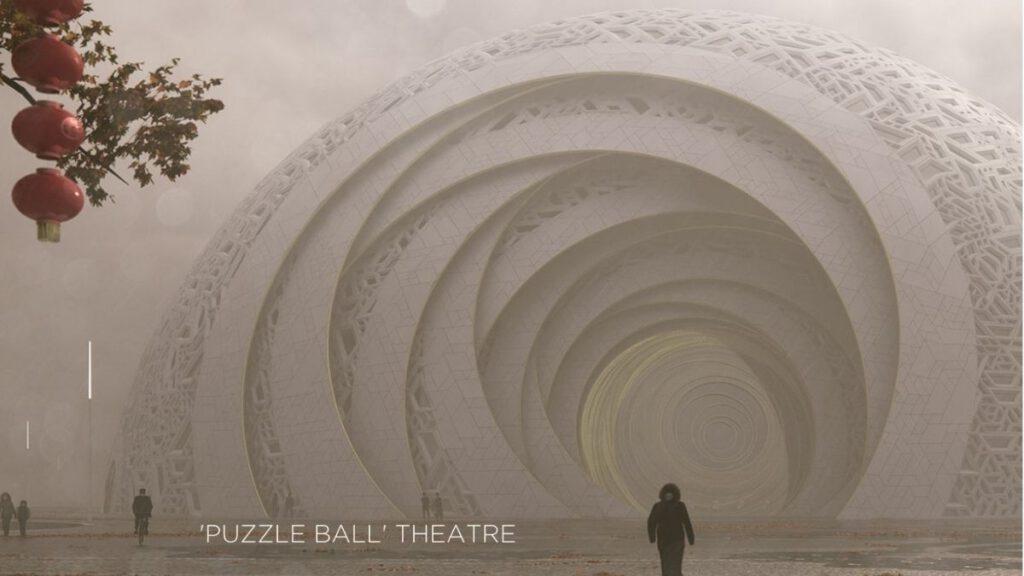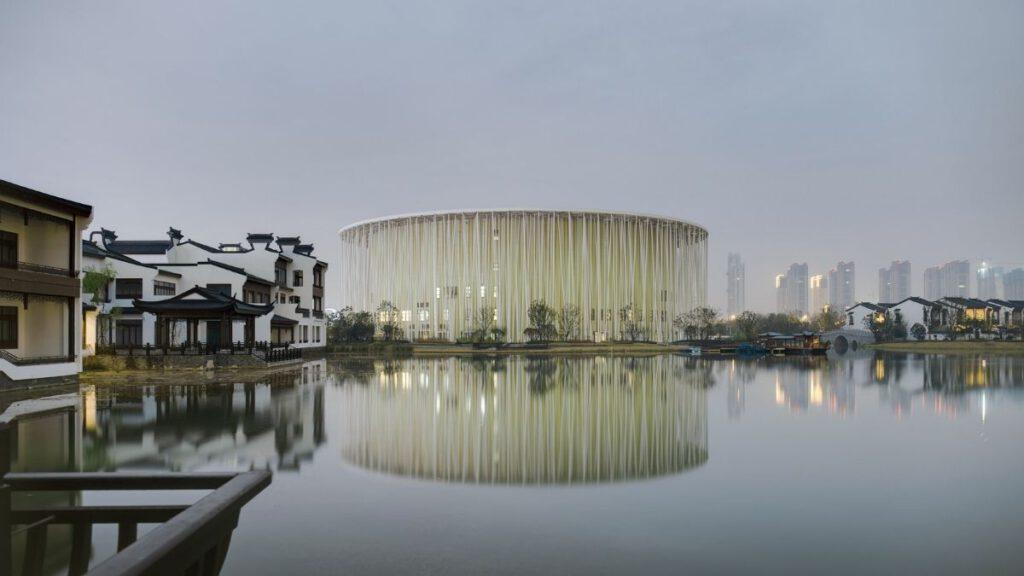Scene-making in China
The first thing that strikes you about the recently completed Sunac Guangzhou Grand Theatre is the intense red of its facade. Steven Chilton Architects drew inspiration from China’s flowing, embroidered silk fabrics.
The history of the city of Guangzhou seems almost “woven” into the fabric of the new Sunac Guangzhou Grand Theatre: Steven Chilton Architects has designed a theatre whose form ties in with Guangzhou’s historical importance as the hub of the antique “silk road by the sea”.
Since the Han dynasty, the port has been an important centre not only for trade, especially in silk, but also for art. Situated north-west of Hong Kong as the largest city in the Pearl River delta, for thousands of years Guangzhou has been home to artists who have helped define the image of Chinese culture around the world for centuries.
The recently completed Sunac Guangzhou Grand Theatre was designed by the London firm SCA|Steven Chilton Architects. It will be one of a group of entertainment venues in the Huadu district of the city. The theatre can accommodate 2,000 guests. There are many cultural and museum projects underway in China at the moment, including the Natural History Museum in Shenzhen, for which the team from 3XN received the commission.
Cultivating talent
Steven Chilton, founder of Steven Chilton Architects, is quoted in the media as saying: “We have endeavoured to channel and focus the history, emotion, and creative energy of the city through a building whose purpose is to nurture the next generation of cultural leaders in the performing arts.”
Silk has been artistically painted and embroidered for thousands of years in Guangzhou, bearing scenes from myths and nature. These can be seen on tapestries and ornamental garments. The architects from SCA drew inspiration from them when designing the Sunac Guangzhou Grand Theatre. And they also create a link to the current culture of tattoo art in the city.
Mythical birds
In contrast with the initial draft, which used the same colour scheme but left the facade “blank”, the striking, intensely red facade is now adorned with a multitude of mythical birds. They are based on illustrations by the artist Zhang Hongfei (born 1950), which SCA digitized and interpreted.
In a series of design studies, the individual figures, phoenixes, cranes, chickens and other birds on the surface geometry were then positioned at the “right places” on the “body” of the theatre.
A series of darker patterns inspired by tattoo art were drawn on the red cladding. The animals were then applied over the base layer. Important figures like the phoenix were given positions of prominence where shape plays an outstanding part, while lesser figures are organically and discreetly arranged in the intermediate spaces.
Tattoo art has rekindled interest in traditional Chinese culture, says Chilton. Its symbols and myths are frequently seen in western popular culture too.
Location: Huadu, Guangzhou, China;
Client: Sunac China Holdings Ltd.;
Costs: Confidential;
Architect: SCA |Steven Chilton Architects;
Inauguration: anticipated 2021
Red “cladding”
The shape of the building is influenced by the physicality, or rather delicacy, of silk fabric. Its outer shell has the appearance of thin fabric that gently twists, producing folds that create natural entrances into the building. Each entrance is protected by the natural overhang formed by the “fold” that draws back to form the opening, as it were.
The theatre is thus enveloped in an undulating red garment made from thousands of triangular, perforated aluminium sheets. Its design is intended to evoke the folds in flowing silk. The panels are fixed to a series of steel tubes that are connected with a concrete structure supporting the floors of the theatre.
Staging water shows
In the centre of the building is a circular auditorium, around which all other rooms – including rehearsal rooms and offices – are grouped. The auditorium is surrounded by 360 LED screens. Twelve hoists, three acrobatics rails and gantry trolleys are installed above the stage.
The stage itself sits atop a nine-metre-deep pool in which it can be raised or lowered in order to stage water shows. It can thus be used for both visiting and resident productions, with or without spectacular water effects.
Powerful visual identity
It is hoped that the theatre’s powerful visual identity will raise the stature of the hitherto oft overlooked city district, and attract local visitors as well as tourists. In this way, the architecture itself is exploited as a visual spectacle to draw in the masses.
SCA’s other obviously attention-grabbing theatres include another theatre planned for Guangzhou that looks like an artistically carved ivory puzzle ball.
Another theatre, the Wuxi Taihu Show Theatre near Shanghai, was opened in 2019. It is wrapped in a steel construction and looks like a bamboo forest. Wuxi is a city located near to Shanghai in the east of China. It was designed by Steven Chilton Architects as the permanent venue for a water show by Belgian theatre director Franco Dragone. He is known for spectacular shows like “Le Rêve” in Las Vegas and “The House of Dancing Water” in Macau.
Text: Linda Benkö
Images: SCA, Chong-Art Fotografie, Kris Provoost
